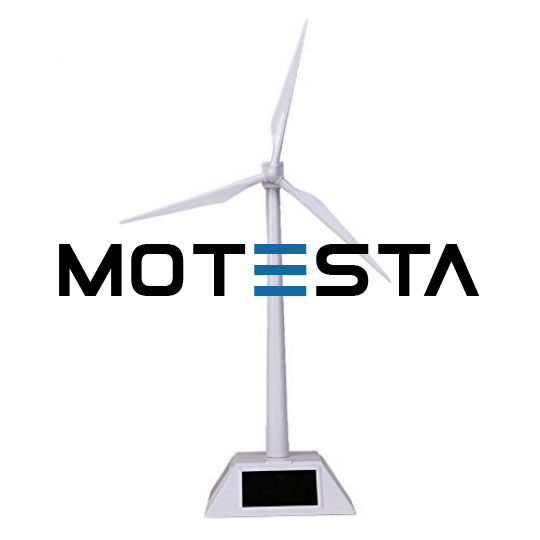 lab@motestainstruments.com | Civil and Mechanical Engineering Lab Equipments India China
lab@motestainstruments.com | Civil and Mechanical Engineering Lab Equipments India China

Code: NLE-17-0122
Wind Power Technology Model.
8.1 Technical Description
The model shall consist of wind turbine generator/controller (where it contains different components such as Dynamometer/power supply and a battery pack) and Wind turbine demonstrator. The Wind Turbine Generator/Controller shall consist of the generator and controller of an actual small-scale wind turbine, mounted in a full-size module (workstation). The module shall include auxiliary components (a three-phase diode rectifier and a set of three power resistors) that can be used to apply a variable electric load to the generator. There shall be Color-coded jacks mounted on the front panel of the module to provide access to the generator windings, controller input and output, diode rectifier, and power resistors.
The front panel of the module shall be lowered for access to the generator, and when closed, it shall then be secured by two quick-lock fasteners. A pulley on the generator shaft shall allow coupling to the Dynamometer/Power Supply. This module shall be used as a prime mover that faithfully reproduces the torque-speed characteristic at the generator shaft when wind blows on the bladed rotor of an actual wind turbine.
The generator in the Wind Turbine Generator/Controller shall be a three-phase, permanent-magnet synchronous generator. The controller shall be a power electronics device that converts the three-phase power produced by the generator into DC power and ensures that the generator produces the maximum amount of power possible at any wind speed within the operating range.
The controller shall also perform voltage regulation to maintain a constant DC voltage output and prevents overcharging of the battery pack used to store the electrical energy produced by the wind turbine generator.
The module shall be provided with a control knob on the module front panel to allow the maximum charge (DC) voltage to be adjusted. An LED on the module front panel shall indicate the status (normal battery charging, voltage regulation, etc.) of the controller. Battery charging shall be stopped anytime through a switch on the front panel.
The Wind Turbine Demonstrator shall be an actual small-scale wind turbine modified to display the main internal components. The wind turbine shall be a fixed-pitch, three blade rotor that is directly coupled to the generator. The wind turbine shall be mounted atop a pole at a height that facilitates observation of the internal components. There shall be casters at the base of the metal pole to make the whole unit easy to move. The casters shall have a built-in brake system to stabilize the unit when in place.
The Model shall also consist of Magnetic Field Strength Indicator and a Wind Turbine Rotor.
8.2 Technical Specification of the Model
The model must include the following technical specifications:
Component Name Specification
1 Wind turbine Generator/Controller 220V – 50 Hz
Wind turbine Type Direct drive, fixed-pitch three blade rotor
Control output Power 200 W at 12.5 m/s wind speed
Charge Voltage Set point Range 54.4 V to 68.0 V
Recommended Battery Pack Voltage
48 V
Diode rectifier 600 V – 6 A
Power Resistance (3) 15Ω – 100 W (each resistor)
Physical characteristics Dimensions (H x W x D) Approx. 308 x 291 x 440 mm
Net Weight Approx. 12Kg
2 Wind turbine Demonstrator 220V – 50 Hz
Wind turbine Type Direct drive, fixed-pitch three blade rotor
Blade Radius Approx. 62.2cm
Nacelle Length Approx. 67.6cm
Physical characteristics Dimensions (H x W x D) Approx. 1800 x 991 x 991 mm
Net Weight Approx. 21.8 kg
3 Magnetic Field Strength Indicator 220V – 50 Hz
Scale range -10 – 0- +10
Physical characteristics Dimensions (H x W x D) Approx. 50.8 x 50.8 x 25.4 mm
Net Weight Approx. 0.05kg
4 Wind Turbine Rotor 220V– 50 Hz
Physical characteristics Dimensions (H x W x D) Approx. 76.2 x 88.9 x 88.9 mm
Net Weight Approx. 0.77kg
5 Multimeter for electrical measurements To be specified by bidder. Quant. Required= 2
8.3 Figurative description of the Model
An equivalent resemblance of the Wind power technology model is indicated in Figure 8.
Figure 8: Equivalent figurative description of the Wind power technology model